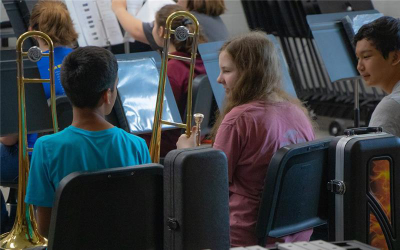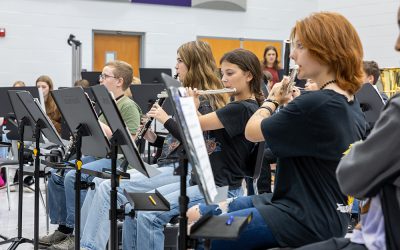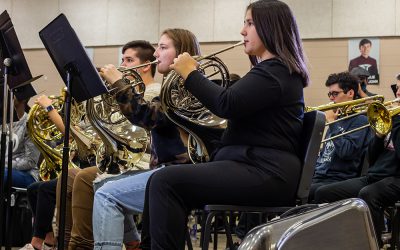Bandroom Tips
Preventing Disruptive Behaviors in Our Rehearsals
As most of us understand, we have few behavior problems in our classes with bands. The students are, by in large, among the best students in our schools. They are involved in a...
Listening Skills That Improve Your Ensemble
You may think listening is an innate skill that improves with time—it’s not. From the early days of learning their instrument, a clear priority must be for each student to listen...
Beginning Trombone with Jeffrey Phillips
Join XO Artist and Educator Dr Jeff Phillips as he discusses the steps to assemble, hold, care for and create the first pitch on the trombone in this series of 4 videos created...
Ideas for Better Ensemble Warm-Ups
Though working on pieces in a rehearsal can be extraordinarily beneficial, time spent doing warm-up and ensemble development exercises at the beginning and scattered throughout a...
Intonation Training – Developing a Lifetime Skill
In our lives, we thrill in finding the answers to mysteries, solving riddles, or discovering secrets. Teaching students to be sensitive and accurate with pitch and intonation can...
Thoughts From A Recovering Band Nitwit
Full Disclosure: I was “that kid” in the back, planting giggle-worthy ideas in other kids' heads. It’s the blessing/curse of being a low brass player. I was a decent young...
Quick Tips and Ideas for Better Rehearsal Techniques
Rehearsal time is precious. As music teachers, it can be some of our most rewarding and exciting moments. But, I think we can all agree that rehearsal time can also be some of...
How to Sterilize String Instruments for Covid-19
Please note, this article contains information for consideration to reduce the risks of spreading COVID-19 on string instruments. We cannot guarantee these suggestions are...
From Marching Band to Concert Band: The Secrets to Success in Transition
From the unsolicited blaring trumpet and the near reckless abandon of low brass splats, the seemingly limitless “nature” of the great outdoors invites instrumental sounds on the...













